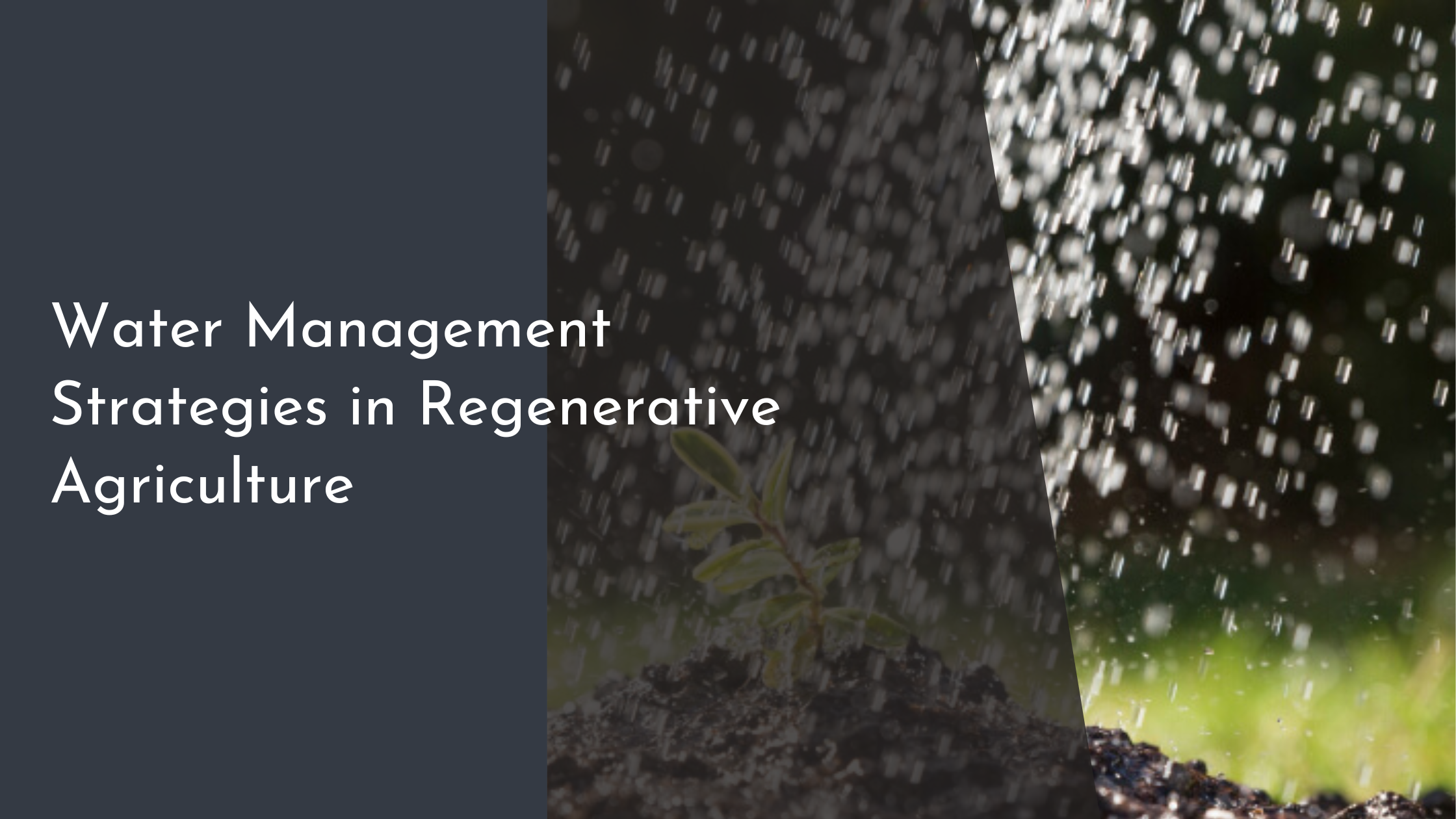Water Management Strategies in Regenerative Agriculture
Regenerative agriculture is rapidly gaining traction as a sustainable farming practice that not only enhances soil health but also promotes effective resource management. One key area where regenerative agriculture shines is in its approach to water management. As climate change exacerbates water scarcity issues, adopting innovative strategies to conserve and manage water becomes crucial. This article delves into the core principles of regenerative agriculture and explores the innovative water management strategies being employed to ensure a sustainable future.
Understanding Regenerative Agriculture Basics
Regenerative agriculture is a holistic land management practice that focuses on restoring and enhancing the natural ecosystem processes. Unlike conventional agriculture, which often depletes the soil, regenerative agriculture aims to improve soil health, increase biodiversity, and sequester carbon, thereby creating resilient and productive farming systems. Key principles include minimal soil disturbance, crop diversification, cover cropping, and integrating livestock—a recipe for a self-sustaining agricultural model.
Water management is a critical component of regenerative agriculture. Healthy soil, teeming with organic matter and a robust structure, is better equipped to retain moisture, reducing the need for external irrigation. This not only conserves water but also enhances resilience against drought conditions. The emphasis is on creating systems that work with nature to optimize water usage, ensuring long-term sustainability and productivity.
Innovative Water Conservation Techniques
One of the innovative water conservation techniques used in regenerative agriculture is the creation of swales and keyline designs. Swales are shallow trenches designed to capture and channel rainwater, allowing it to percolate into the soil rather than running off the surface. This technique not only conserves water but also reduces soil erosion and supports groundwater recharge. Keyline design, meanwhile, involves contour plowing, which enhances water distribution across the land, promoting even moisture levels.
Another noteworthy technique is the use of cover crops. These crops are grown not for harvest but for their ability to protect and enrich the soil between periods of regular crop production. Cover crops such as legumes and grasses increase soil organic matter, enhance soil structure, and improve water infiltration. By minimizing evaporation and maintaining soil moisture, cover crops play an integral role in water conservation within regenerative agricultural systems.
Integrating Technology in Water Management
The integration of technology in water management can significantly enhance the efficiency and effectiveness of regenerative agriculture practices. Precision irrigation systems, such as drip or micro-irrigation, deliver water directly to the plant’s root zone, minimizing waste and maximizing water use efficiency. These systems can be further optimized with the use of soil moisture sensors and automated irrigation controllers, ensuring that crops receive the right amount of water at the right time.
Remote sensing technologies and data analytics are also becoming invaluable tools in regenerative agriculture. By utilizing drones and satellite imagery, farmers can monitor soil moisture levels, crop health, and water distribution patterns across their fields. This data-driven approach allows for informed decision-making, helping farmers optimize water usage, detect issues early, and adjust practices to improve overall farm productivity and sustainability.
Real-World Success Stories and Examples
A prime example of successful water management in regenerative agriculture is seen in the practices implemented by Gabe Brown, a pioneer in the field. On his farm in North Dakota, Brown employs techniques such as cover cropping, no-till farming, and rotational grazing, which have significantly improved soil structure and water retention capabilities. As a result, his farm thrives with reduced irrigation needs, even in times of drought, demonstrating the powerful impact of regenerative practices.
The success of regenerative agriculture practices is not limited to individual farms. Larger-scale projects, like the Savory Institute’s work in Africa, demonstrate how regenerative grazing and holistic land management can restore degraded landscapes and improve water availability. By promoting vegetation growth and enhancing soil health, these efforts have led to increased water retention in the soil, improved watershed health, and revitalized local ecosystems, benefiting communities and biodiversity alike.
As water scarcity becomes a pressing global issue, the need for sustainable agricultural practices has never been more critical. Regenerative agriculture offers a promising solution by integrating innovative water management strategies that conserve resources and bolster resilience. Through techniques like swales, cover cropping, and the integration of advanced technology, regenerative agriculture not only addresses water challenges but also creates a more sustainable and productive agricultural future. Embracing these practices holds the key to transforming farming systems worldwide, making them more resilient against climate adversities and sustaining life on a thriving planet.

